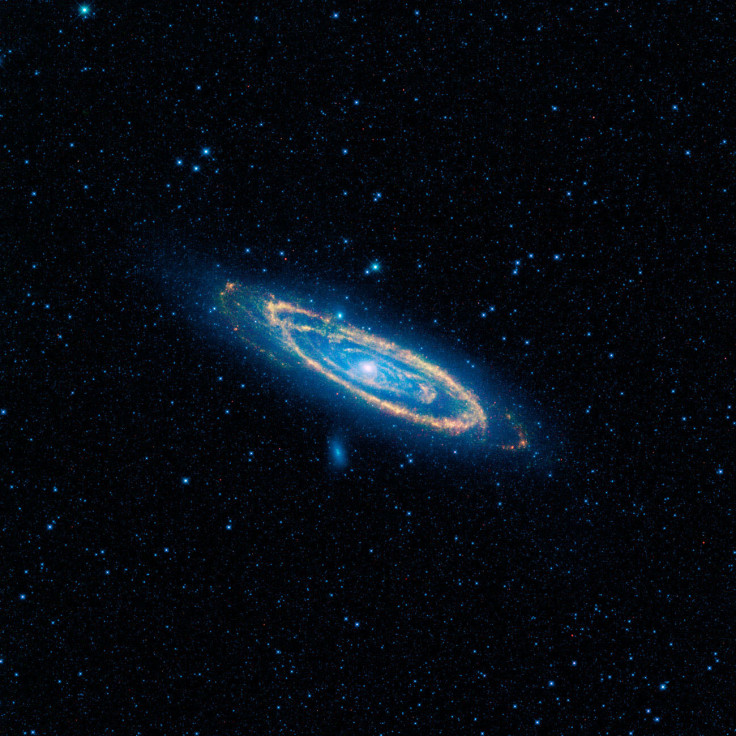Advanced alien civilisations missing in 100,000 galaxies

Extraterrestrial intelligent life in the universe either does not exist or human perceptions of advanced civilisations are deeply flawed, according to a study which is the largest one of its kind to be conducted in the search for alien life.
After examining almost 100,000 nearby large galaxies, the team of researchers led by Pennsylvania State University failed to find any signs of highly advanced technological civilisations.
Where Seti and other organisations have focused on messages beamed through space using laser or radio waves, the study looked for heat signatures conveying energy-hungry civilisations.
This is based on an idea put forth in 1960 by the physicist Freeman Dyson that a growing technological culture would ultimately be limited by access to energy.
Hence, advanced civilisations would be driven to harvest energy from their stars and rotating black holes, putting up swarms of solar collectors on nearby planets, or from giant computer networks set up in the cold outskirts of galaxies.
All of this would cause the starlight to fade but produce waste heat and that was what the Pennsylvania study looked for.
Russian astronomer Nikolai Kardashev extended these ideas to develop a tripartite classification system for a civilisation's energy use. A "type 1" civilisation would harness all the energy of its home planet (as on Earth) whereas a type 2 uses all the energy of its star, while a type 3 civilisation could capture the entire energy of its galaxy and look like an infrared (heat-emitting) galaxy seemingly bereft of stars.
WISE Study
Using an all-sky catalogue from Nasa's Wide-field Infrared Survey Explorer (WISE), the Penn team looked for type 3 candidates by studying objects that were optically dim but bright in the mid-infrared.
After using software first to automatically sift through some 100 million objects in the WISE catalogue, the researchers then examined the remaining candidates by hand, removing those that weren't galaxies.
The field was narrowed to about 100,000 galaxies, with about 50 in particular that emitted much more heat than light. Using available literature on most of these, they concluded that none qualified for heat emitting advanced civilisations.
"We looked at the nearest, largest 100,000 galaxies we could find in the WISE catalogue and we never saw that. One hundred thousand galaxies and not one had that signature. We didn't find any type 3s in our sample because there aren't any," says astronomer Jason Wright who led the study.
Published in The Astrophysical Journal Supplement Series, this is said to be the largest study of its kind to date where earlier research had investigated a mere hundred galaxies.
If microbial life emerged and evolved into humans on Earth, why should it not have happened on many worlds out there, has been a question puzzling scientists and seekers alike.
The warm and wet conditions for life have been discovered in many of the planets in our solar system and far beyond but while these can sustain simple, single-celled life, the question of intelligent life brings in the aspect of energy.
Energy use on Earth has increased by about 3% per year. To sustain the trend, humanity would need a million years to capture the energy of the entire solar system and another million years to suck the energy out of the stars in the Milky Way.
Questions remain
But once life is capable of spacefaring, it could cross a galaxy in a brief 50 million years and should have criss-crossed the universe many times since the 14 billion years of existence, point experts.
Does astrophysics or biology make intelligent life rare or do technological civilisations possibly always self-destruct?
Could we be the first in the line of advanced civilisations?
That is where the argument on intelligent extraterrestrial life takes a turn to ask if we have got the perceptions of intelligent life all wrong. Perhaps advanced civilisations are not wasteful, and have learnt to keep greed out?
Dyson at 91 is not put off by the latest study and says, "If there are any real aliens, they are likely to behave in ways that we never imagined. The WISE result shows that the aliens did not follow one particular path. That is good to know. But it still leaves a huge variety of other paths open. The failure of one guess does not mean that we should stop looking for aliens."
© Copyright IBTimes 2025. All rights reserved.





















